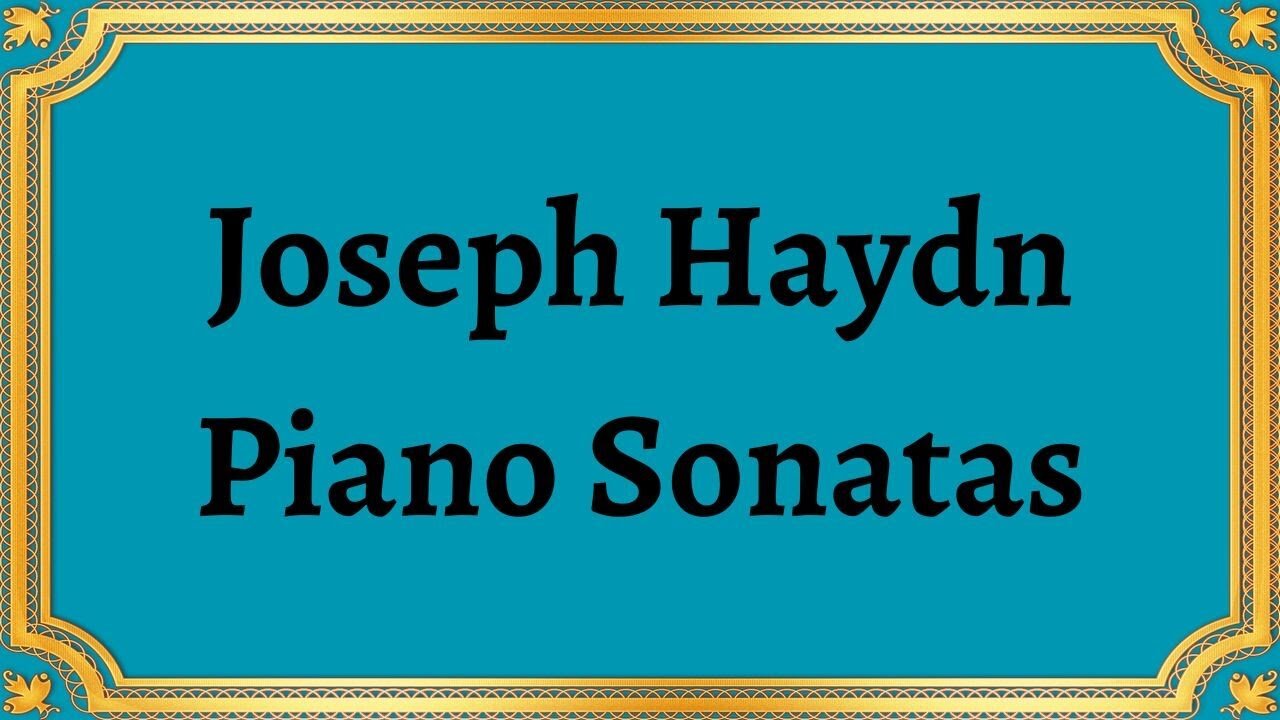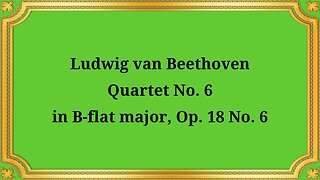Premium Only Content

Joseph Haydn Piano Sonatas
#Joseph_Haydn#piano_sonatas#classical_music, composition
Joseph Haydn Piano Sonatas
1. No. 46 (Peters No. 8) In A-Flat Major
2. No. 20 (Peters No. 25) In C Minor
3. No. 42 (Peters No. 28) In D Major
4. No. 23 (Peters No. 21) In F Major
5. No. 13 (Peters No. 18) In E Major
Joseph Haydn, one of the greatest musical composers of the classical era, contributed a lot to the world of classical piano compositions. He composed 60 piano sonatas, each with their unique style, rhythm, and melody.
The Piano Sonata No. 46 (Peters No. 8) In A-Flat Major is a beautiful example of Haydn's work, with its delicate and ethereal qualities. The opening "Allegro" movement is serene and lyrical, with a vital melody that is played in different forms throughout the various sections of the movement. The second movement, "Adagio," is a slow and expressive melody in the minor key, and the final movement, "Allegro," is more upbeat and lively, with engaging rhythms and harmonies.
The Piano Sonata No. 20 (Peters No. 25) In C Minor is one of Haydn's most dramatic and expressive works. The first movement is marked as "Allegro moderato," and it features numerous dynamic shifts and sudden changes in the melody. The second movement, also in C minor, is "Andante con moto," and it is a sorrowful and poignant melody that is played softly. The final movement is more upbeat and lively.
The Piano Sonata No. 42 (Peters No. 28) In D Major is a joyful piece that expresses Haydn's unique style. The first movement is marked as "Allegro," and it's an energetic piece with an exciting melody that is played rapidly. The second movement "Andantino," is a calmer and more subdued melody, while the final movement, "Allegro," is more dynamic and than the opening movement.
The Piano Sonata No. 23 (Peters No. 21) In F Major is another beautiful example of Haydn's work. The opening "Allegro" movement is exciting and playful, with engaging rhythms and melodies. The second movement, "Adagio," is a lyrical and expressive melody, with beautiful harmonic progressions, while the final movement "Presto," is a rapid and virtuosic melody played rhythmically.
Joseph Haydn's Piano Sonata No. 13 (Peters No. 18) In E Major is a fine example of his distinguished and creative style. Composed in 1773, the piece stands out among Haydn's other piano sonatas due to its challenging technical requirements and its expressive qualities.
You have the opportunity to support the channel https://destream.net/live/RadSiarAl/donate
-
 22:54
22:54
Classical music_Music Inspiration
5 days agoLudwig van Beethoven Quartet No. 6 in B-flat major, Op. 18 No. 6
252 -
 4:09:32
4:09:32
EricJohnPizzaArtist
6 days agoAwesome Sauce PIZZA ART LIVE Ep. #59: Are You Ready for some FOOTBALL with GameOn!
30.8K7 -
 1:21:43
1:21:43
Jake Shields' Fight Back Podcast
14 hours agoJake Shields and Paul Miller!
65.3K110 -
 1:20:41
1:20:41
TRAGIKxGHOST
6 hours agoTrying to get SCARED tonight! | Are You SCARED!? | Screams Beyond Midnight | Grab a Snack
22.9K2 -
 5:21:24
5:21:24
StuffCentral
7 hours agoI'm baaack (no you can't play with me.. unless you a healer)
24.1K4 -
 2:25:11
2:25:11
TheSaltyCracker
9 hours agoTrump Is Not Dead ReEEeStream 8-31-25
100K134 -
 3:09:16
3:09:16
THOUGHTCAST With Jeff D.
7 hours ago $5.10 earnedLabor Day Weekend FORTNITE With THOUGHTCAST Jeff & the squad
26.2K4 -
 3:44:05
3:44:05
Rallied
9 hours ago $6.52 earnedSolo Challenges All Day
50K1 -
 9:02:14
9:02:14
iCheapshot
10 hours ago $0.52 earnedCall of Duty: Black Ops Campaign
14.3K1 -
 4:39:16
4:39:16
Meisters of Madness
11 hours agoMadness in a Pod
12.2K1